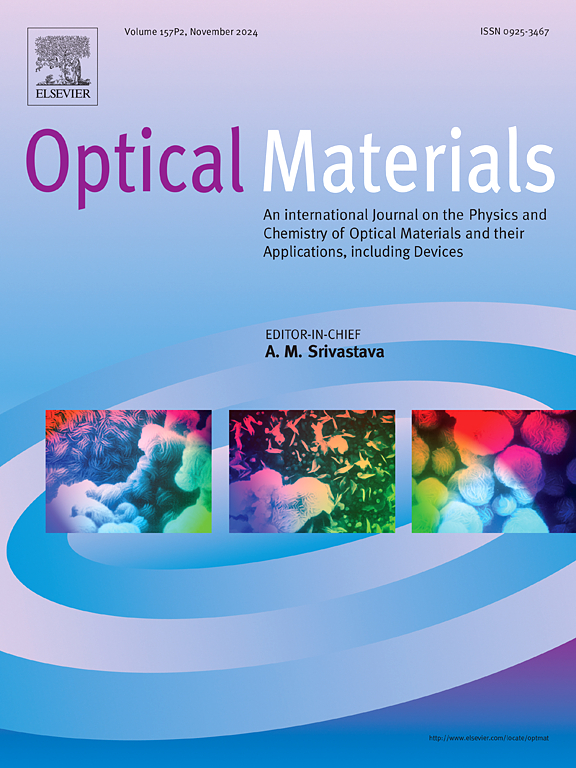晶体硅太阳能电池降移钙钛矿量子点薄膜载流子选择
IF 3.8
3区 材料科学
Q2 MATERIALS SCIENCE, MULTIDISCIPLINARY
引用次数: 0
摘要
晶体硅太阳能电池长期主导光伏市场,但其光电转换效率难以进一步提高。虽然已有研究提出在器件表面涂覆钙钛矿量子点降移膜,但对量子点与其载流子之间的相互作用还缺乏系统的研究。我们选择了光学薄膜中三种典型的聚合物:乙烯-醋酸乙烯酯共聚物(EVA)、聚甲基丙烯酸甲酯共聚物(PMMA)和乙烯-甲基丙烯酸甲酯共聚物(EMMA),并将它们与钙钛矿量子点溶液混合制备复合薄膜。通过组分分析、光学表征和理论计算,我们系统地探索了不同聚合物与钙钛矿量子点之间的相互作用。在EVA、PMMA和EMMA三种复合降挡膜的保护下,晶体硅电池的效率分别提高了0.49%、0.21%和0.81%。密度泛函理论计算表明,正是聚合物链与钙钛矿量子点之间的强相互作用使EMMA成为钙钛矿量子点的最佳载体。本研究提出了一种生产成本低、性能稳定的钙钛矿量子点/聚合物复合薄膜,在光伏领域具有重要的应用潜力。本文章由计算机程序翻译,如有差异,请以英文原文为准。
Carrier selection in downshifting perovskite quantum dot films for crystalline silicon solar cells
Crystal silicon solar cells have long dominated the photovoltaic market, but their photoelectric conversion efficiencies are difficult to further improve. Although some studies have proposed to coat perovskite quantum dot downshifting film on surface of the device, there remains a lack of systematic research on the interaction between the quantum dots and their carriers. We selected three typical polymers in optical film, ethylene-vinyl acetate copolymer (EVA), polymethyl methacrylate copolymer (PMMA) and ethylene-methyl methacrylate copolymer (EMMA), and mixed them with perovskite quantum dots solutions to prepare composite films. Through component analysis, optical characterization, and theoretical calculations, we systematically explored the interaction between different polymers and perovskite quantum dots. Under protection of three composite downshifting films based on EVA, PMMA, and EMMA, the efficiencies of crystal silicon cells were increased by 0.49 %, 0.21 % and 0.81 %, respectively. As demonstrated by density functional theory calculations, it is the strong interaction between polymer chains and perovskite quantum dots make EMMA become the champion carrier for perovskite quantum dot. This study presents a promising perovskite quantum dot/polymer composite film characterized by low production costs and stable performance, demonstrating significant potential in the field of photovoltaics.
求助全文
通过发布文献求助,成功后即可免费获取论文全文。
去求助
来源期刊

Optical Materials
工程技术-材料科学:综合
CiteScore
6.60
自引率
12.80%
发文量
1265
审稿时长
38 days
期刊介绍:
Optical Materials has an open access mirror journal Optical Materials: X, sharing the same aims and scope, editorial team, submission system and rigorous peer review.
The purpose of Optical Materials is to provide a means of communication and technology transfer between researchers who are interested in materials for potential device applications. The journal publishes original papers and review articles on the design, synthesis, characterisation and applications of optical materials.
OPTICAL MATERIALS focuses on:
• Optical Properties of Material Systems;
• The Materials Aspects of Optical Phenomena;
• The Materials Aspects of Devices and Applications.
Authors can submit separate research elements describing their data to Data in Brief and methods to Methods X.
 求助内容:
求助内容: 应助结果提醒方式:
应助结果提醒方式:


